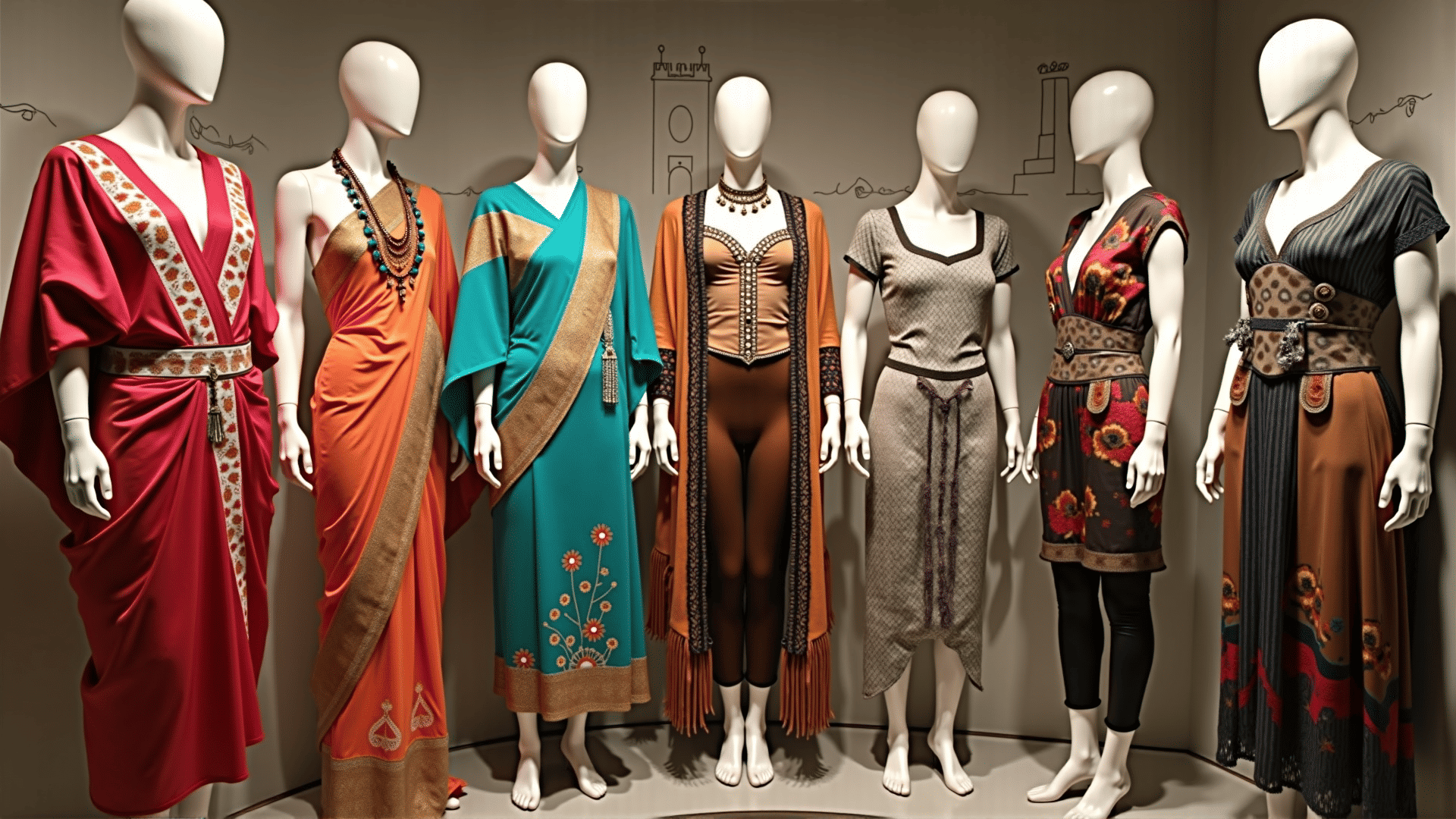In an increasingly interconnected world, cultural exchanges significantly influence fashion trends, creating a rich tapestry of style that transcends geographical and cultural boundaries. Over time, fashion has transformed through these interactions, merging traditional elements with modern interpretations to produce innovative and diverse apparel.
The Silk Road serves as a historical example of how cultural exchanges have influenced fashion. It was not only a network for trade but also a conduit for cultural interaction. Luxury textiles, such as silk from China and cotton from India, were highly prized and played a crucial role in shaping fashion in Europe. This trade route also facilitated the movement of artisans and their techniques, spreading embroidery styles and weaving patterns to distant lands.
In contemporary fashion, Japanese influences have left an indelible mark on global styles. The kimono, once a strictly traditional garment, has inspired many Western designers. They incorporate aspects of its structure and aesthetic into collections, creating a fusion of East and West. The minimalist designs and bold patterns characteristic of Japanese fashion have also resonated globally.
India has offered its vibrant textile practices to the world stage. The intricate techniques of block printing and the rich hues of traditional Indian attire have captivated audiences worldwide. The saree’s elegant draping has inspired global designers to explore new ways of styling.
The African continent, with its diverse cultures, has also significantly impacted fashion trends. Wax prints and bold geometric patterns are now seen on international runways. Designers have embraced African motifs, integrating them into contemporary clothing lines. This blend highlights a celebration of heritage and innovation.
Hispanic cultures have also contributed to the global fashion landscape. The use of bold colors and traditional handcrafting techniques, like weaving and embroidery, reveal a rich cultural narrative that is now being appreciated on a global scale.
One cannot overlook the influence of urban street culture. Originating from urban centers, street style reflects a blend of diverse cultural backgrounds and has become highly impactful in shaping modern fashion narratives. Its essence is adaptability, reflecting the global mix of ideas and cultural expressions.
The fusion of traditional attire with modern silhouettes exemplifies how cultural exchanges can lead to fresh and exciting styles. Iconic cross-cultural attire, such as the poncho, has its roots in South American indigenous cultures but is now embraced and adapted globally. Such garments highlight how fashion can both preserve and innovate cultural identity.
In conclusion, cultural exchanges are a fundamental pillar in shaping fashion. They inspire creativity and innovation, transforming traditional attire into global fashion statements. As cultures continue to intertwine, fashion will undoubtedly continue to evolve, reflecting the rich diversity of the world's cultural heritage.
